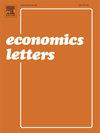基于资本的宏观审慎政策对银行资产负债表构成的影响
IF 1.8
4区 经济学
Q2 ECONOMICS
引用次数: 0
摘要
我们评估了以资本为基础的宏观审慎政策对银行资产负债表构成的影响。采用包含30个欧洲国家188项宏观审慎行动的银行层面面板向量自回归模型,我们分析了监管变化对银行业变量的影响,同时考虑了内生性。结果表明,宏观审慎政策冲击正向影响普通股一级比率,促使银行将资产配置从高风险贷款调整为更安全、流动性更强的资产,从而降低风险加权资产,提高资本比率。此外,监管机构通过提高资本要求来应对银行贷款和盈利能力的提高,表现出了积极的行为。政策制定者应该谨慎,因为额外的资本要求可能会导致银行通过减少风险加权资产来加强其资本状况,这可能会减少贷款,并对银行盈利能力和实体经济产生不利影响。本文章由计算机程序翻译,如有差异,请以英文原文为准。
The impact of capital-based macroprudential policy on banks’ balance sheet composition
We assess the effects of capital-based macroprudential policy on the composition of banks’ balance sheets. Employing a bank-level panel vector autoregressive model incorporating 188 macroprudential actions across 30 European countries, we analyze the impact of regulatory changes on banking variables while accounting for endogeneity. The results indicate that macroprudential policy shocks positively affect the common equity tier 1 ratio, prompting banks to adjust their asset allocations from higher-risk loans to safer, more liquid assets, thereby reducing risk-weighted assets and increasing the capital ratio. Additionally, regulators demonstrate proactive behavior by raising capital requirements in response to heightened bank lending and profitability. Policymakers should be cautious, as additional capital requirements may lead banks to strengthen their capital positions by reducing risk-weighted assets, potentially diminishing lending and adversely affecting banking profitability and real economy.
求助全文
通过发布文献求助,成功后即可免费获取论文全文。
去求助
来源期刊

Economics Letters
ECONOMICS-
CiteScore
3.20
自引率
5.00%
发文量
348
审稿时长
30 days
期刊介绍:
Many economists today are concerned by the proliferation of journals and the concomitant labyrinth of research to be conquered in order to reach the specific information they require. To combat this tendency, Economics Letters has been conceived and designed outside the realm of the traditional economics journal. As a Letters Journal, it consists of concise communications (letters) that provide a means of rapid and efficient dissemination of new results, models and methods in all fields of economic research.
 求助内容:
求助内容: 应助结果提醒方式:
应助结果提醒方式:


